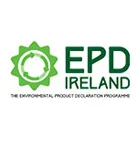In the world of construction, there’s a growing movement towards sustainability. As we become more aware of the impact our actions have on the environment, it’s essential to find ways to build eco-friendly structures. One critical tool in this endeavour is the Environmental Product Declaration (EPD).
In this blog, we’ll explore the significance of EPDs and how they align with the environmentally conscious benefits of cement-based liquid screed in construction.
EPDs are an essential tool that provide comprehensive and credible information about the environmental impact of construction materials. These documents are based on Life Cycle Assessments (LCA) that track the entire life cycle of a product, from raw material extraction to end-of-life disposal. EPDs offer a standardised format that facilitates easy comparison of products based on their environmental performance.
Why are EPDs Important in Construction?
Transparency: EPDs provide clear and straightforward information about a product’s impact on the environment. This helps architects, builders, and buyers make informed decisions about the materials they choose for construction projects.
Comparability: With EPDs, it’s easier to compare different products. Just like comparing the nutritional values on food packaging, EPDs let us compare the environmental “nutritional” value of materials. This way, we can pick the ones with the lowest environmental impact.
Encouraging Sustainable Choices: Manufacturers who get EPDs for their products are encouraged to adopt greener and more sustainable practices. They know that customers are increasingly looking for eco-friendly options, so they strive to improve their products to meet those demands.
Certifications and Incentives: Green building certifications, like LEED or BREEAM, reward projects that use sustainable materials with EPDs. This means that buildings with EPD-approved materials can receive special recognition or even financial incentives.
Climate Change Mitigation: Construction has a significant impact on climate change due to energy consumption and greenhouse gas emissions. By choosing materials with lower environmental footprints, we can reduce the construction industry’s contribution to global warming.
Supporting a Circular Economy: EPDs encourage the use of materials that can be recycled or repurposed at the end of their life. This contributes to a circular economy, where products are reused or recycled instead of becoming waste.
Cemfloor and Sustainability
In 2020, Cemfloor by McGraths were delighted to be awarded an EPD for our Cemfloor Binder as we strive to adopt sustainability methods in every area of our business. Cemfloor is an excellent example of a sustainable construction material that aligns with the principles of EPDs.
Its rapid installation process and self-levelling properties contribute to energy efficiency on construction sites. Additionally, the thermal conductivity of Cemfloor enhances the performance of underfloor heating systems, promoting energy conservation during building use.
Cement based liquid floor screeds, such as Cemfloor, offer exceptional durability and longevity, reducing the need for frequent repairs or replacements. This longevity minimizes material waste and further supports sustainable building practices.
Lower Carbon Footprint: EPDs for cement-based liquid screeds often show a reduced carbon footprint compared to other screeds. The manufacturing process of liquid screed releases fewer greenhouse gases, contributing to a greener construction industry.
Energy Savings: Liquid screed’s unique self-levelling properties reduce the need for extensive labour during installation. This efficient application process saves energy and time during construction.
Optimal Thermal Conductivity: Cement-based liquid screed has excellent thermal conductivity, making it an ideal choice for underfloor heating systems. The improved heat distribution enhances energy efficiency, leading to reduced energy consumption in buildings.
Waste Reduction: Liquid screed is precisely applied, resulting in minimal waste during installation. The controlled process ensures that materials are used efficiently, reducing construction debris, and promoting a cleaner job site.
Longevity and Durability: Cement-based liquid screed is exceptionally durable, meaning it can withstand heavy foot traffic and other stressors for an extended period. Its long lifespan reduces the need for frequent replacements, further contributing to sustainability by minimizing material waste.
Conclusion
Environmental Product Declarations (EPDs) play a vital role in construction’s journey towards a more sustainable and eco-friendly future. By providing transparency, comparability, and encouraging sustainable choices, EPDs help us make better decisions about the materials we use in our buildings, encouraging the use of eco-friendly options like cement-based liquid screed. The numerous advantages of liquid screed, including resource efficiency, lower carbon footprint, energy savings, waste reduction, and durability, perfectly align with the principles of sustainability
With these declarations, we can construct structures that are not only functional and beautiful but also gentle on the environment. By collectively embracing the concept of EPDs, we can create a brighter and greener tomorrow for generations to come.



